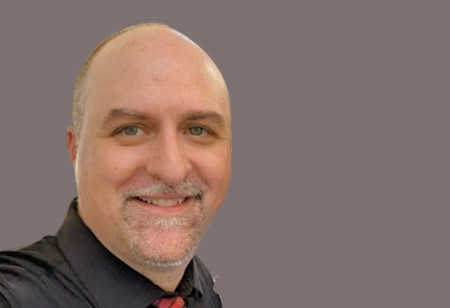Thank you for Subscribing to Construction Business Review Weekly Brief

Leading Engineering Teams through Precision and Purpose
Pietro Da Sacco is the Regional Engineering Manager West at Doka USA, overseeing engineering teams across California, Washington, and Colorado. With nearly 20 years at the company, he brings deep expertise in formwork and shoring for complex infrastructure, high-rise, commercial, and residential projects. Pietro plays a key role in strategy, team development, and crossfunctional coordination to ensure quality, safety, and timely delivery. His project portfolio includes the LAX People Mover, USC Football Performance Center, and Gerald Desmond Bridge in Long Beach.
Shaping a Leadership Philosophy through Complex Projects
Several pivotal moments have shaped my leadership philosophy in the formwork and shoring industry. That philosophy’s core is the commitment to clear and consistent communication and organization on all projects. This principle applies across all aspects of our work, from collaborating internally on complex and routine projects to working with clients who often require rapid turnaround on design, engineering, and material delivery. Effective project management is also key to ensuring follow-through on complex structures.
In my current role, I lead a diverse team of engineers across the Western Region, which requires maintaining open and continuous lines of communication to ensure smooth project execution from inception to completion. With team members based in California, Washington, and Colorado, I rely on our engineering team leaders to drive innovation and follow-through—consistently applying Doka USA’s formwork and shoring solutions and standards. Our ongoing focus on safety and workflow efficiency—from project kick-off meetings to tackling engineering challenges—requires close coordination with our Operations, Sales, Project Management, and Field Service teams to deliver complete solutions to our customers.
The most pivotal moments often arise when we face complex challenges, whether working on infrastructure projects, high-rises, or commercial and residential developments. These situations underscore the importance of collaboration, agility, and leadership in delivering successful outcomes. All projects—large or small—require consistent application of the above principles.
Ensuring Consistency across a Geographically Dispersed Team
To ensure quality and consistency across geographically dispersed teams, I rely on a combination of communication tools, standard methods such as day-to-day email, phone, and collaboration platforms such as Microsoft Teams. These platforms allow me to coordinate effectively with our multifaceted teams across multiple locations. Managing project timelines and deliverables through our internal Doka scheduling software is also key to assigning work packages, tracking timesheets from initiation through completion, and ensuring alignment and accountability among my team.
Leadership begins with openness to new ideas, diverse perspectives, and collaborative problem-solving. Listening actively and valuing input from colleagues and clients’ alike fosters trust and drives better outcomes.
We proactively monitor our project pipeline to confirm that all upcoming work is appropriately staffed within our region. When capacity constraints arise, we seamlessly transition overflow to our Engineering support groups, who collaborate closely with our regional teams. This ensures continuity, maintains our standards, and meets our customers’ expectations on every project.
Strategies for Driving Efficiency on Landmark Projects
With numerous high-profile projects across the Western Region (and the USA), we continuously evaluate and refine our formwork and shoring solutions. This includes adopting new products and strategies to meet our customers’ evolving needs and expectations, while aligning closely with market demands. A key priority is ensuring that our project schedules are synchronized with our clients, enabling us to meet all deliverables efficiently across each job site.
Driving efficiency remains a central focus, and one of the most impactful tools we utilize is Building Information Modeling (BIM), through platforms such as Revit and Tekla. These tools allow us to develop multi-dimensional formwork and shoring designs and collaborate more effectively with clients who integrate BIM into their workflows. With BIM, we deliver precise design solutions and accurate material lists directly from our 3D models. This enables our customers to virtually “walk through” their projects before construction begins, significantly improving on-site assembly and overall project execution.
Solving Design Challenges in Urban Infrastructure Projects
Over the past year, we have observed significant delays across several large-scale infrastructure projects. For example, our skilled team had already engineered many projects in 2024, requiring us to remain agile in responding to an ever-evolving landscape of scheduling changes, funding challenges, and unforeseen interruptions, many of which are now delivered in 2025. We often needed to expedite formwork and shoring solutions based on the original timelines, only to later adjust those plans in collaboration with our Project Management and Operations teams. Their continued coordination and flexibility have been critical in ensuring that materials are delivered to the site once project delays are resolved.
From a design standpoint, our formwork and shoring systems are highly adaptable and can accommodate various structural geometries. When a solution is not readily available within our existing fleet, we offer custom design services to meet the demands of unconventional or complex structures, ensuring our clients receive tailored support regardless of the project’s complexity.
Advice for Aspiring Engineering Leaders
For aspiring engineering leaders, the journey starts at the ground level. Leadership begins with openness to new ideas, diverse perspectives, and collaborative problem-solving. Listening actively and valuing input from colleagues and clients’ alike fosters trust and drives better outcomes.
Stay committed to your passion, follow through on your responsibilities, and be present for your team. Sometimes, simply being available and listening is the most potent form of leadership. Aligning others’ perspectives with your technical expertise allows you to guide teams through projects of all sizes with clarity and purpose.
I strive to recognize and use my team’s strength every day. Great leaders empower individuals to focus on their strengths, building confidence, accountability, and teamwork.
Ultimately, effective leadership is less about having all the answers and more about creating an environment where the best solutions can emerge through collaboration and mutual respect.








